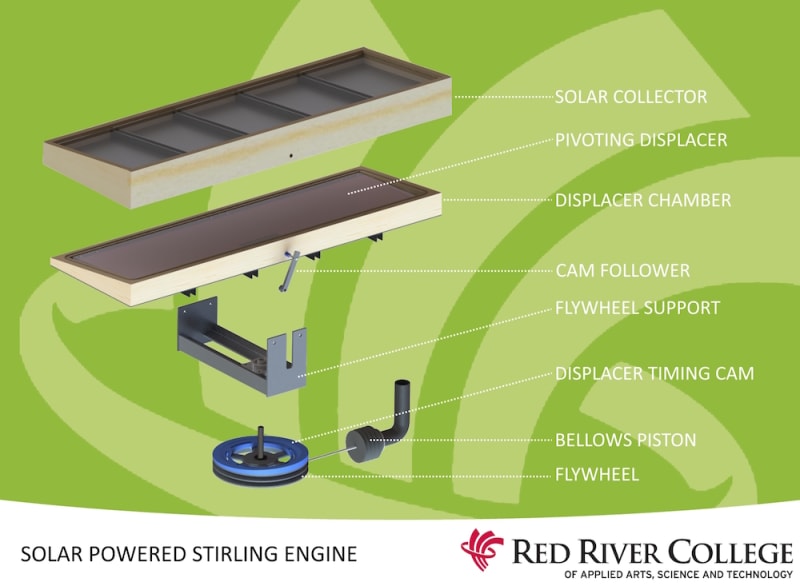Harness the power of the sun with this solar powered Stirling engine. Using sustainable technology, it is environmentally friendly - materials are renewable and recyclable.
The beauty of this low cost engine is that anybody can build it at home. A trip to the local hardware store provides everything you need.
Innovation:
This engine has several distinctive design features including a horizontal cam, a flat plate solar collector and low cost material, setting it apart from other Stirling engines. Usually, the engine has sinusoidal displacer motion which is less efficient. Our cam introduces a dwell during periods of the cycle to allow air to heat and cool more effectively. As the cam is horizontal to the displacer, it can be incorporated into a smaller package, easily placed on a roof. The flat plate collector is integrated into the engine, making it more compact and economical to build. The design of the flat plate collector really is simple, consisting of a sheet of glass, an air gap and an absorbing surface.
How It Works:
The engine follows the Stirling thermodynamic cycle which is the most efficient type of engine and closest to the Carnot cycle. It is externally heated and requires a gas for the working medium. Air was selected as it is abundant and alleviates design considerations regarding seals and small leaks. During testing, the solar collector surface reached over 100°C, while the heat rejection plate was approximately 45°C. At these temperatures, the engine has a capability of producing 5 to 10 Watts.
During the cycle, the solar collector injects heat into the displacer chamber. When the air is in contact with the solar collector it heats and expands. The air expansion pushes a bellows piston that drives a flywheel. A cylindrical cam connected to the flywheel controls the timing and motion of the displacer. The displacer is located within the displacer chamber. Its purpose is to move the air from the hot side to the cold side of the engine as well as to insulate the hot and cold surfaces. When the air is in the cold side of the engine, its heat is rejected into the atmosphere through an aluminum plate. As a result, the bellows piston contracts and the flywheel rotates the cam. The displacer then pushes the air back to the hot side of the engine to repeat the cycle (see the video for a visual representation).
Video
Like this entry?
-
About the Entrant
- Name:Serge Broeska
- Type of entry:teamTeam members:Leon Fainstein Serge Broeska
- Software used for this entry:SOLIDWORKS
- Patent status:none








